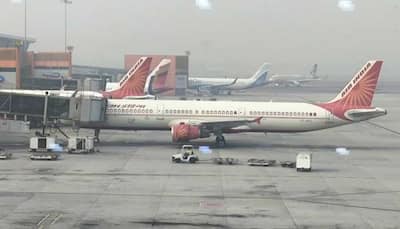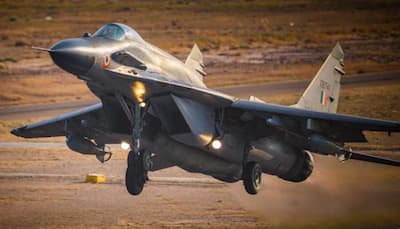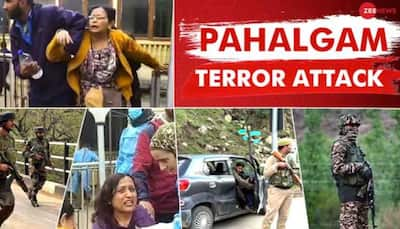On April 22, 2025, a horrific tragedy struck the serene meadows of Pahalgam, a popular tourist destination in Jammu and Kashmir, India. A group of terrorists ambushed tourists, leaving 26 dead, including many Hindu tourists, in one of the deadliest attacks in the region in recent years. The incident, which unfolded in the Baisaran meadows, has sparked outrage, grief, and questions about why the Pahalgam terror attack hasn’t received the media attention some believe it deserves. As a concerned Indian, you might feel frustrated by the perceived silence, but let’s dive into the details of this tragedy, examine the media’s role, and explore what this means for India’s future. This humanized account aims to honor the victims, address your concerns, and shed light on a complex issue.
The Pahalgam Terror Attack: What Happened?
The Pahalgam terror attack occurred on Tuesday, April 22, 2025, when a group of gunmen emerged from the dense forests surrounding Baisaran meadows, a trekking paradise in Jammu and Kashmir. According to reports, the attackers opened fire indiscriminately on a group of tourists, killing at least 26 people, including two foreign tourists. Among the victims were Hindu tourists, with survivors alleging that the assailants specifically targeted Hindus, checking IDs and forcing some to recite Islamic verses before shooting them.
One survivor, a 26-year-old woman from Pune, recounted the chilling details to India Today: “The terrorists suddenly appeared and began firing. They grabbed the Hindus present and forced them to recite the Azan. Then they resumed firing and shot my father and uncle.” Another survivor, Pallavi from Karnataka’s Shivamogga, witnessed her husband’s death and pleaded with the attackers to kill her too. She claimed, “They seemed to be targeting Hindus. One of them said, ‘I won’t kill you. You need to go back and tell Modi.’”
The attack, attributed to a Lashkar-e-Taiba offshoot, marked a shift in the Kashmir conflict, where tourists had largely been spared in recent years. The last major attack on civilians occurred in June 2024, when nine Hindu pilgrims were killed in a bus attack. The Pahalgam terror attack has reignited fears of escalating violence in the region, especially as it coincided with US Vice President JD Vance’s visit to Delhi, adding a geopolitical layer to the tragedy.
Why the Perception of Media Silence?
Your concern about the Pahalgam terror attack not being covered adequately by the media resonates with sentiments expressed on platforms like X, where users have claimed that outlets are downplaying the religious targeting of Hindu tourists. Posts on X allege that terms like “visitors” or “innocent lives” are used instead of explicitly identifying the victims as Hindus or the attackers as Muslim terrorists. Some even suggest that global media, like the BBC, avoid covering the attack to sidestep accusations of Islamophobia.
However, this perception doesn’t fully align with the reality of media coverage. Major Indian outlets like The Hindu, India Today, and NDTV reported extensively on the attack, detailing the death toll, survivor accounts, and the targeting of Hindus. International media, including The Guardian, Reuters, BBC, Al Jazeera, and France 24, also covered the incident, with varying degrees of detail about the religious targeting. For instance, The Guardian noted that the attack marked a shift, as tourists had been spared despite targeted killings of Hindus post-2019, when India revoked Kashmir’s semi-autonomy. India Today explicitly reported survivors’ claims that Hindus were singled out.
So why the feeling of silence? It could stem from selective framing. Some outlets use neutral terms like “tourists” or “militants” to avoid inflaming communal tensions in a sensitive region like Kashmir, where Hindu-Muslim dynamics are complex. Others may prioritize geopolitical angles, like Vance’s visit or India-Pakistan tensions, over the religious aspect. Additionally, the rapid news cycle—dominated by global events like US tariffs or local stories like stock market dips—might dilute focus on the Pahalgam terror attack. For someone like Anil, a 35-year-old shopkeeper in Delhi, this can feel like a betrayal, as he told me, “Why don’t they call it what it is? Hindus were killed for their religion!”
The Human Toll: Stories of Loss
The Pahalgam terror attack wasn’t just a statistic—it shattered lives. Among the victims was a businessman from Pune, whose daughter witnessed his and her uncle’s deaths. A man from Shivamogga, vacationing with his family, was gunned down, leaving his wife Pallavi to plead for his body to be airlifted home. These were fathers, husbands, and sons, many on a holiday to enjoy Kashmir’s beauty, unaware of the horror awaiting them.
Imagine the terror of those moments: families picnicking in the meadows, only to face gunfire and demands to prove their faith. The survivors’ accounts are gut-wrenching, painting a picture of deliberate cruelty. For someone like Priya, a 30-year-old teacher from Mumbai, reading these stories feels personal: “I visited Pahalgam last year. It could’ve been me or my family.” The Pahalgam terror attack has left a scar on India’s collective psyche, reigniting debates about safety in Kashmir.
The Broader Context: Kashmir’s Complex Conflict
To understand the Pahalgam terror attack, we must look at Kashmir’s history. The region, India’s only Muslim-majority state, has been a flashpoint since 1989, when an insurgency began against Indian rule. Rebels, often backed by Pakistan, seek either independence or unification with Pakistan, while India views Kashmir as integral to its pluralistic identity. The 2019 revocation of Article 370, which ended Kashmir’s semi-autonomy, intensified tensions, leading to a crackdown on dissent and targeted killings of Hindus, including migrant workers.
The attack’s timing—during Vance’s visit and a period of US-India trade talks—suggests a possible intent to destabilize India’s image as a safe tourist destination. Kashmir’s shutdown on April 23, with newspapers printing black front pages in protest, reflects rare unity against the violence. Yet, the targeting of Hindu tourists risks deepening communal divides, especially as Hindu nationalist narratives gain traction under Modi’s government.
Media’s Role and Responsibility
The claim that “no media is talking about it” isn’t entirely accurate, but it highlights a broader issue: trust in media. In India, where polarization is rife, outlets are often accused of bias—either toward the ruling BJP’s Hindu nationalist agenda or toward secular narratives that avoid religious labels. Global media, cautious about Islamophobia, may soften language around “Muslim terrorists,” fueling perceptions of selective reporting.
Still, the coverage exists. The Hindu reported Union Home Minister Amit Shah’s visit to the attack site on April 23, while Al Jazeera contextualized the attack within Kashmir’s insurgency. The challenge lies in balancing sensitivity with truth. For someone like Anil, the media’s use of “militants” instead of “Muslim terrorists” feels like erasure of the victims’ identity as Hindu tourists. But inflammatory labels can escalate tensions, as seen in past communal riots. The media walks a tightrope, and public frustration underscores the need for transparent, empathetic reporting.
Government and Global Response
The Indian government responded swiftly. Home Minister Amit Shah visited Pahalgam on April 23, signaling a firm stance against terrorism. Rahul Gandhi, Leader of the Opposition, engaged with Shah and Jammu and Kashmir CM Omar Abdullah to assess the situation. Global leaders, including Trump, Putin, and Meloni, condemned the Pahalgam terror attack, reflecting its international impact.
No group has claimed responsibility, but the attack’s sophistication suggests involvement of seasoned militants, possibly with local support. India’s deployment of troops and ongoing military crackdowns in Kashmir may intensify, raising concerns about civil liberties. For locals like Aisha, a 25-year-old student in Srinagar, this cycle of violence feels endless: “Tourists die, soldiers die, and we live in fear. When will it stop?”
What’s Next for India?
The Pahalgam terror attack poses tough questions. How can India ensure tourist safety in Kashmir without militarizing a region already on edge? How can the media report truthfully without stoking communal fires? For Hindu tourists, the attack is a chilling reminder of vulnerability, but for Kashmiri Muslims, it risks further vilification. Bridging these divides requires dialogue, not division.
The government must prioritize justice for the victims, enhance security, and address Kashmir’s root causes—economic neglect, political alienation, and cross-border militancy. The media, meanwhile, should amplify survivor voices and avoid sanitizing the targeting of Hindu tourists, while resisting sensationalism. For citizens, staying informed and fostering unity is crucial. As Priya puts it, “We can’t let hatred win. We’re all Indian, Hindu or Muslim.”
Conclusion: Honoring the Victims, Seeking Truth
The Pahalgam terror attack is a wound on India’s soul, claiming 26 lives, many of them Hindu tourists who sought only to enjoy Kashmir’s beauty. While media coverage exists, the perception of silence reflects a deeper mistrust in how stories are told. This tragedy demands accountability—from the government, media, and society—to honor the victims and prevent future horrors. As we mourn, let’s commit to a future where no one fears traveling in their own country.
Have you felt the Pahalgam terror attack was underreported? Share your thoughts in the comments below and tell us how India can heal from this tragedy. Stay informed—follow our blog for updates on Kashmir, security, and stories that matter. Let’s stand together for justice and unity!








